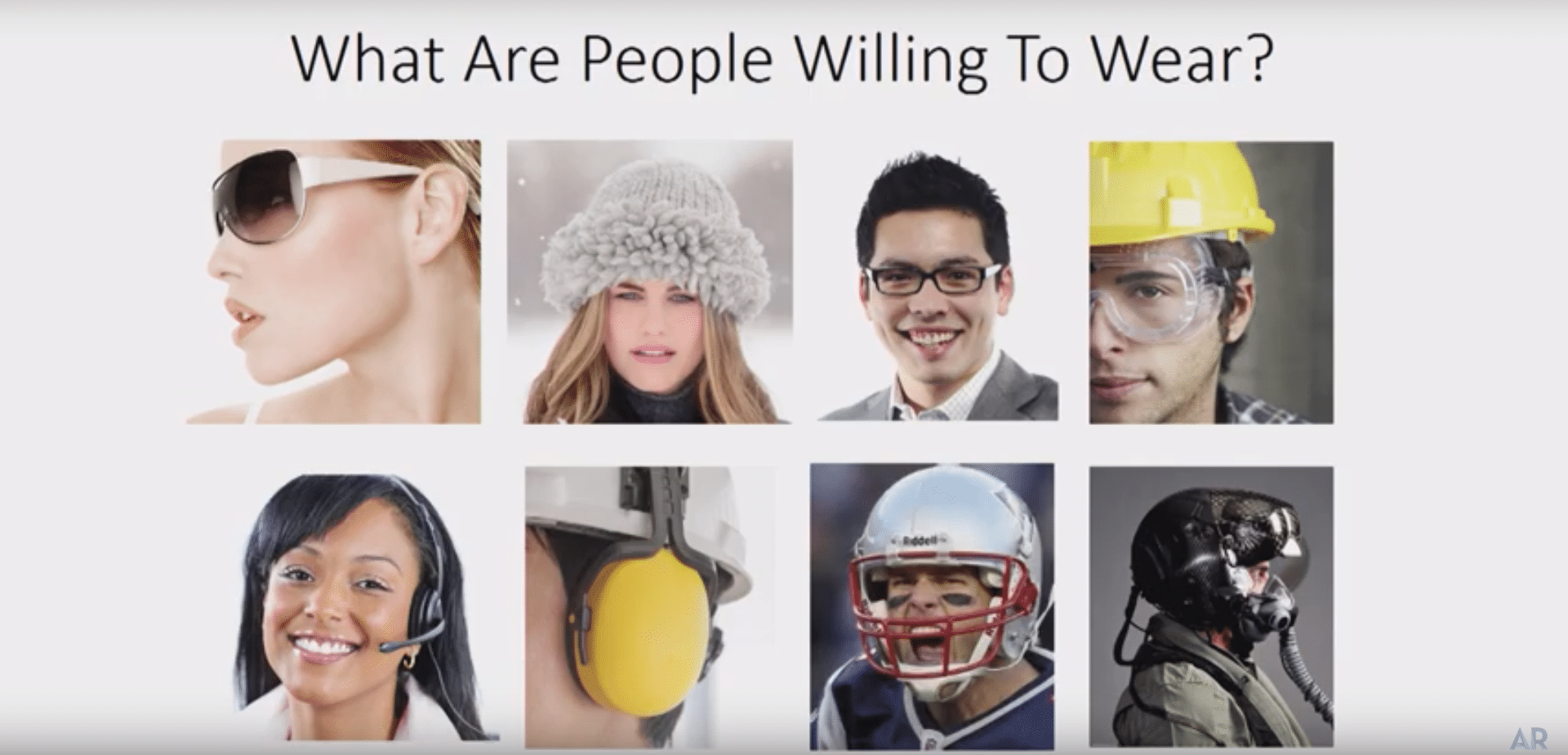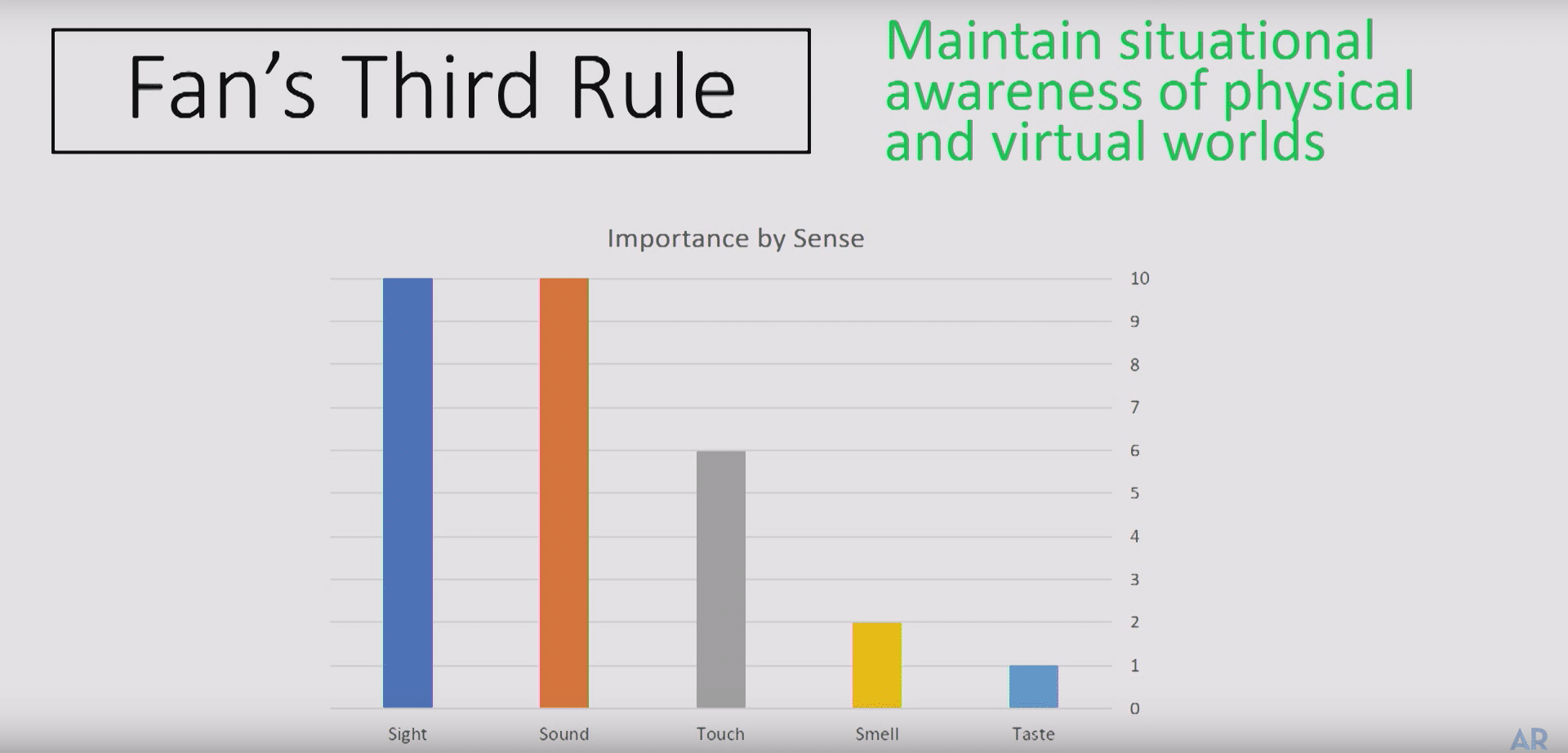
XR Talks is a series that features the best presentations and educational videos from the XR universe. It includes embedded video, as well as narrative analysis and top takeaways. Speakers’ opinions are their own.
One AR success factor we’ve examined is to design for and solve human problems, rather than engineering ones. This was also a central message in Kopin CEO John Fan’s address at the recent ARIA conference (video below) — a redux of his infamous “Five Rules.”
To devise such guidelines, he espouses looking at the successes and failures of the past. There, he invokes a Confucius quote: “You have to study the past before you can define the future.” And Kopin has learned a lot in its years of work providing AR hardware to clients like the U.S. military.
“Where has AR failed and succeeded, and why?” he posed. “The last year has been a very tough year for VR and AR. I think we have been heading in too many directions, and have made too many mistakes. I think there is a clear path that is actually evolving now.”

First, because humans have evolved to stand upright, a lateral and peripheral field of view has become central to our perception of the world. But tech evolution has gone in the opposite direction, giving us ubiquitous smartphones that lower our gaze to handheld hardware.
With that consideration, AR’s true fate is headworn. Of course mobile is where most AR activity rightly resides today, due to greater opportunity and scale. But as we’ve examined, mobile is a stepping stone in AR’s evolutionary path, and a training ground for a headworn endgame.
But the caveat according to Fan is that humans naturally avoid putting things on their heads. So there should be a big enough value exchange to counteract that resistance. We see examples of that in everything from safety goggles to fighter jet helmets, which Kopin builds AR displays for.

These are mostly enterprise examples but it’s an important lesson for consumer AR glasses, as they develop from Apple and others. In fact, the “value exchange” is an even greater requirement for style-conscious consumer markets, which is why consumer AR glasses aren’t a thing yet.
In cases like heads-up displays, the feature set isn’t compelling enough to get over these natural resistance points. The fact that glasses today are too bulky weakens the value-exchange further. That’s admittedly improving with smart glasses like Vuzix Blade, North Focals and Nreal Lite.
All of the above just covers Fan’s first of five rules: Be human-first. Flowing from that is Rule #2: Don’t overwhelm the senses. In other words, while fulfilling AR’s promise to augment the physical world, don’t go overboard with overlays. This can cause disorientation and safety issues.

“You have to make sure the digital world doesn’t overwhelm the physical world,” he said from the stage. “Your human brain can’t absorb it. It’s dangerous. I don’t know why people propose to do it. People are putting too many features into AR glasses. They should strip it down.”
Closely related to that is Rule #3: Maintain situational awareness. This brings in a sort of hierarchy of senses that are important to accommodate in AR experiences. For example, sight and sound are more important than smell and taste, when targeting senses for AR experiences.
“Sight and sound are very important physical senses.” Fan said. “I think people have underplayed sound. All the other senses aren’t as important. AR Glasses should have voice control and be voice-centric. Then you can think about vision, which gives you physical awareness.”

Rule #4 expands on that: Voice is the new touch. Just as touch was an interface that ruled the smartphone era, voice will be a key input for AR glasses. This makes sense, given a hands-free use case and parallel advancements in voice assistants underway from Google and others.
Finally, Rule # 5 is to balance purpose-built design with benefits. In other words, think of the end user and work backward from there. But also narrow the feature set for AR experiences so that they are focused rather than trying to do too many things — a message we’ve heard before.
“We need design that’s purpose-built with benefits in mind,” said Fan. “Otherwise you try to jam everything in there, and try to have a bigger Swiss Army knife, and that’s going to fail.”
See the full presentation below.
For deeper XR data and intelligence, join ARtillery PRO and subscribe to the free AR Insider Weekly newsletter.
Disclosure: AR Insider has no financial stake in the companies mentioned in this post, nor received payment for its production. Disclosure and ethics policy can be seen here.
Header image credit: AR in Action, YouTube
